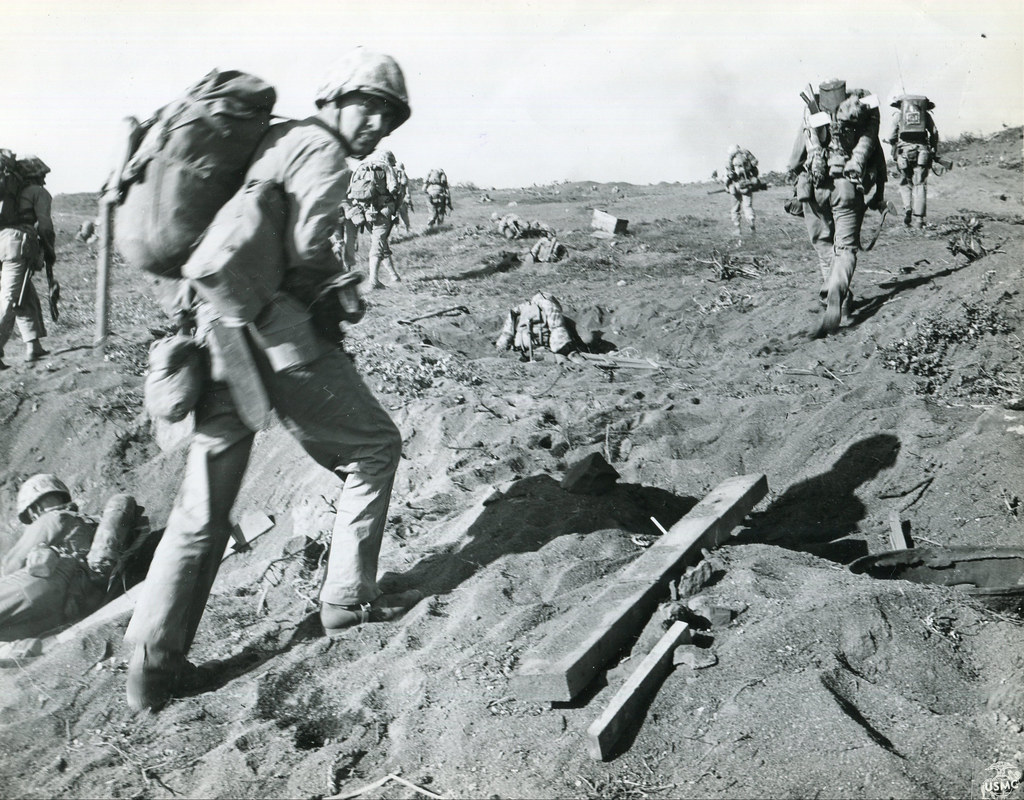As we slowly transition into spring time and hear the birds chirp, the men of Iwo Jima were hearing gunfire and mortars (if you don’t know what mortars are, refer to my other article on the Battle of Anzio:https://hhsclarionnews.com/feature-stories/2024/01/23/80th-anniversary-of-the-battle-of-anzio-22-jan-5-june-1944/). But first, let’s get some backstory on the Battle in the Pacific first.
On December 7, 1941, the Japanese attacked Pearl Harbor in Hawaii to bring America into the war. Fast forward to 1944 when MacArthur saw the island of Iwo Jima as a strategic target to attack mainland Japan when the time would be right. The geography of Japan is essentially a sprinkling of islands. When it came time to invade and conquer the mainland of Japan, we looked no further; it’s reasonably distanced to support bomber planes and troop carriers to carry us into the mainland. Unexpectedly, Iwo Jima became one of the bloodiest battles of the Pacific conflict (“Pacific” being the Pacific Ocean).
Iwo Jima is a volcanic island, with sand and ash covering a lot of the land. On the southwest tip of the island is Mt. Suribachi, which we’ll get back to later. There were only 2 airfields on the island before the fighting began, Motoyama 1 and 2. In 1944, the Japanese Prime Minister sent Lieutenant General Kuribayashi Tadamichi to fortify the island, with bunkers, pillboxes (big concrete boxes that had slots on certain sides to shoot from), artillery positions, and much more. These islands also had many caves which the Japanese used to their advantage to hide and ambush the American soldiers. The Japanese were so hidden in these tunnels that some groups stayed hidden until 1947, 2 years after the war ended- they had no idea the war was over and that Japan was occupied by the American forces.
Before the Marines were dropped by landing craft (boats that went up to the shore and delivered troops), Admiral Nimitz bombarded the island for 3 consecutive days, as this “softens up” the resistance. On Feb. 19, the Marines were successful in separating Suribachi from the rest of the island. The bombardment and fighting were so intense, that Seabees (US Naval Construction Battalions) were sent in to bulldoze the ash and soot from the island. On Feb 21, a kamikaze attack (suicide bomber) struck several important ships, but the Marines pushed onwards. They successfully captured and conquered Suribachi, making that famous photo of 3 Marines raising an American flag famous.
The fighting only got worse after that, though. As the Americans would push into the island, the Japanese would bombard them with artillery and sneak behind them at night to plant mines to halt supply lines to troops. The Marines eventually pushed up and through the Japanese defense to the unfinished airport, Motoyama 3, and captured the hill known to troops as the “Meat Grinder” (officially known as Hill 382). Progress continued until March 26, when the last major engagement took place overnight. The Japanese snuck into an American camp and shot about 100 Americans before being gunned down themselves.
The point of these war memorial articles is to keep the history alive and to make sure no one forgets the immeasurable sacrifice these men and women made for their countries. Even though these countries were at war and killing each other, it’s hard to not have respect for everyone involved. They were all in the same situation- they had a family, were pulled into service, and told to fight until the very end with no foreseen outcome. It was truly noble and a terrible situation to deal with. But they did what they were told with no questions asked. And that is called true courage.

